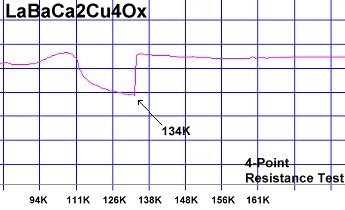
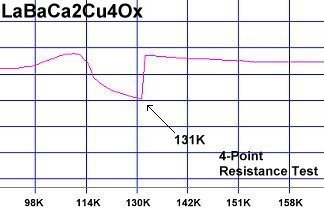
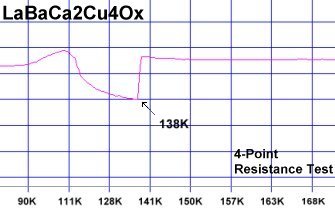
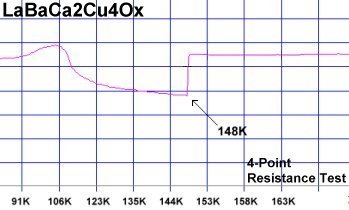




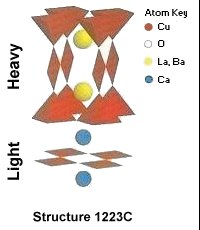
|
Atomic lattices like the 1212C structure of YBCO offer
a unique opportunity to test lanthanum and barium in a proven high-temperature lattice. Through
substitution and addition of two calcium atoms and a copper plane, the 1212C unit cell increases
in size to a 1223C (shown at left). Planar weight disparity (PWD) now exists between the upper copper chain and
lower copper plane. PWD also exists between the upper barium/lanthanum atoms and lower calcium
atoms. In theory this should increase Tc, so long as the insulating layer continues to be hole-doped.
However, with the substitution of La, the insulating layer is now hole-deficient.
So what results when PWD is high, but the Mott transition to a metallic state is undermined by electron doping of the insulating layer? |

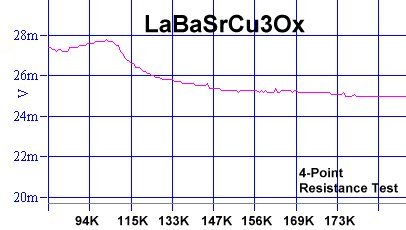
Clearly the mechanism that facilitates high-temperature superconductivity is complex. This discovery of a superconductor without fixed Tc, suggests that yet another variable is at work.
Synthesis of LaBaCa2Cu4Oxwas by the solid state reaction method. Stoichiometric amounts of the below precursors were mixed and pressed at 70,000 psi and sintered for 24 hours at 775C; then for another 11 hours at 890C. Lastly, the pellet was annealed for 10 hours at 500C in flowing O2.
La2O3 99.99% (Alfa Aesar) 3.26 grainsRESEARCH NOTE: Copper-oxides have been found to be strongly hygroscopic. All tests should be performed immediately after annealing.
- E. Joe Eck
© 2010 Superconductors.ORG
All rights reserved.
 BACK to "News" page at Superconductors.ORG
BACK to "News" page at Superconductors.ORG